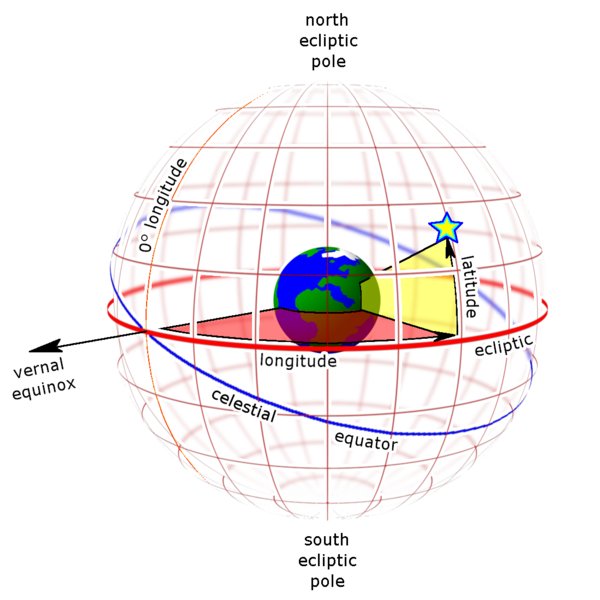
by John P. Pratt
21 Oct 2018, Seed of Woman (Star)
©2018 by John P. Pratt. All rights Reserved.
| 1. The Dragon |
| 2. The Seven Stars |
| 2.1 Celestial Crown |
| 2.2 Visionary |
| 2.3 The Word |
| 2.4 Unified Heart |
| 2.5 Power Center |
| 2.6 Gut Feeling |
| 2.7 Dragon |
| 3. Conclusion |
| Notes |
Some constellations can represent either God or Satan. The serpent which Moses lifted onto the cross represented Christ, but the serpent in the Garden of Eden spoke for Satan. Similarly, the Dragon (Draco) located at the center of the heavens (north ecliptic pole) can either represent God in the midst of heaven or Lucifer attempting to usurp that throne (Isa. 14:12-14, Rev. 12:3). This article discusses seven key stars in the Dragon which are major holy days on the Star Calendar and also key religious events which occurred on those star days.
 |
If one then projects the northern hemisphere of that globe down onto a plane it would look like Figure 2. The center of the circle is the north ecliptic pole and the red Dragon is the constellation which nearly surrounds it. The circle is the ecliptic which the sun appears to move around once each year as the earth orbits the sun. The symbolism of the stars is that constellations on the ecliptic represent the earth, those within that circle are in heaven and those outside the circle are in the underworld. Thus, the Dragon is located at the center of heaven.
Is there any scriptural evidence that this dragon represents God? There are two scriptures that when linked seem to imply just that. First, John the Revelator was allowed to see who sat on the throne of heaven:
And immediately I was in the spirit: and, behold, a throne was set in heaven, and one sat on the throne.
And he that sat was to look upon like a jasper and a sardine stone: — Rev. 4:2-3.
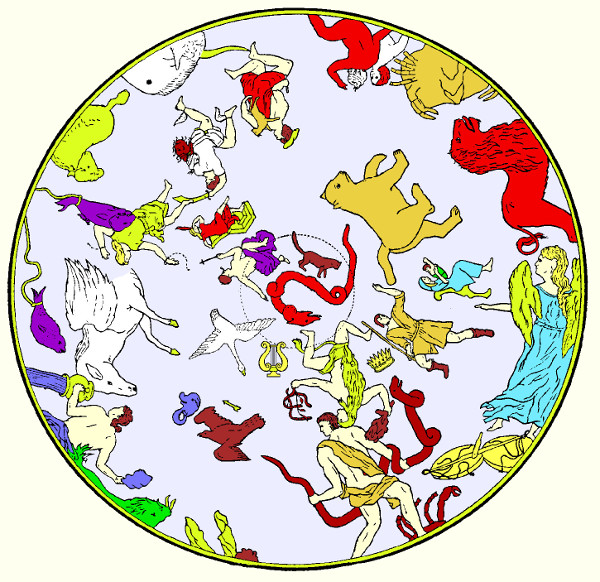 |
Secondly, note that he does not say he saw a man, but only that "one" sat on the throne. That opens the possibility that what he saw was other than a man.
Third, and this is the strangest which demands an explanation, he described the being he saw as "like a jasper and a sardine stone". What does that mean? Well, both jasper and sardius stones are red, so it mostly likely was a veiled way of saying that the one on the throne was red. But instead of helping, that might make the identity of the being even more mysterious. What could the red being be? Why didn't John just tell us? Did he think that we perhaps would not understand it even if he tried to explain it?
The other scripture which gives us a big clue is where John the Revelator describes a sign[2] (constellation) in heaven of a red dragon, which clearly represents Satan (Rev. 12:3). Once one understands that the Dragon can be either God or Satan, and that Lucifer claims to sit on the throne of God in the north at the highest point of heaven to rule over all the stars (Isa. 14:12-14), then it is not hard to identify that red Dragon constellation as the one located at the ecliptic pole (top of heaven). One confirming clue is that both are described as red.
The Star Calendar has 364 days which are each represented by a star. All of the stars are from "good" constellations, whether in heaven, earth, or the underworld. Thus, the red Dragon constellation represents God in the Star Calendar, and not the usurper Satan.
Of the twelve stars in the Dragon included in the Star Calendar, seven of them merit being major holy days. None of those stars is particularly bright, as the stars which represent Jesus Christ usually are, but each is located in a precise strategic location. Each of the seven corresponds to a day on which important sacred events have occurred. Figure 3 identifies the seven stars in Draco at the precise locations in the figure as described by the ancient Greeks. This illustration is from the star atlas of Johannes Hevelius of 1690 who faithfully drew the figures with the stars at body locations exactly as designated by the ancient Greeks. The point of intersection of the many lines near the center of the Dragon is the north ecliptic pole, representing the center and high point of heaven. That is, it is the location of the throne of heaven.
 |
Each of the seven stars is designated by its Greek letter followed by "Dra", the abbreviation for Draco (actually the genitive "Draconis"). Following the Greek and Arabic tradition, the English names were chosen by me to describe both their location in the body of the Dragon[3] as well as their symbolism.
Let us now look at each of those stars and note some events which took place on those days. Keep in mind that all of the dates discussed herein were proposed several years ago as having been holy on other sacred calendars. References for those dates can be found from links on my Religious Chronology. Most are holy days on several sacred calendars; it was only recently that they were found also to be on holy Dragon days which correspond to their precise longitude of these stars in the heavens (see Figure 1 for definition of celestial longitude).
It should also be noted that the day designated for a given star depends on its longitude. Most constellations are near the ecliptic, so all of their stars have a similar longitude. For example, all the stars in the Lion (Leo) have a star day numbered in Leo. Because the Dragon nearly encircles the pole, its stars have a wide range of longitudes and hence star days sprinkled throughout the entire year!
As we look at each of the seven stars, another point needs to be clear. There are two ways to refer to every star day. One is that all of the days are divided into twelve seasons of the twelve zodiac constellations. All of the stars are numbered as to the day of the season, such as 1 Leo, 2 Leo, 3 Leo, etc., until the next season. That refers just to what day of Leo it is, just as is done with 1 January, 2 January, etc. It does not refer to the star for that day.
The star for each day may be located in any of the 42 included constellations, not just the 12 in the zodiac. The star for each day is chosen to be directly above or below the star day. In other words, the day for the star shown in Figure 1 is the star day on the ecliptic directly below it, that is, having nearly the same longitude of that day. Thus, in what follows, the first star is called both 5 Sagittarius (the fifth day in the season of Sagittarius) and also gamma Draconis (the star designated by astronomers with the Greek letter gamma in the constellation of the Dragon).
Another thing to keep in mind is that in the Star Calendar, when corrections are made to the 364-day year to keep it aligned with the 365.256 day true star year (sidereal year), one entire week is inserted after Leo. Thus, every star day always occurs on the same day of the week.
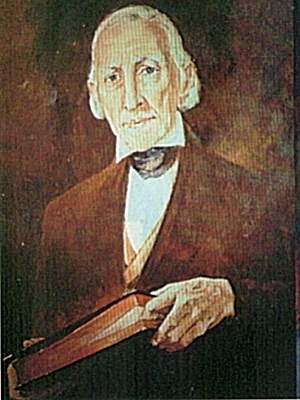 |
This is a star day that one would expect to be associated with ordinations, blessings, settings apart, dedications or great spiritual achievements.
The star day of the Celestial Crown is 5 Sagittarius, which always begins on a Wednesday at noon.
A prime example of a sacred event which occurred on Celestial Crown (S) was the translation of Enoch when he was taken up into heaven. Another example was the death of his great, great grandfather Enos on Celestial Crown (US). That is important with the fact that his whole life represented mortality (death). He was both born and died on 1 Skull (SR) and also died on the star day (S) of the Stinger of the Scorpion! In other words, dying on Celestial Crown is like a reward for having lived a life symbolizing death!
Another example of a sacred event on Celestial Crown (US) was the birth of Eber, for whom the Hebrews are named. He and Shem had an religious academy which both Isaac and Jacob attended.
A latter-day event on Celestial Crown (S) was the ordination of Joseph Smith, Sr., to be the first patriarch of the restored Church of Christ. The ordinations of all of the antediluvian patriarchs occurred on a holy day on the Venus Calendar. His was too, and, in fact, it was on the day 0 Lord (Venus), the same day on which Enoch was ordained and also the day on which Enoch was translated! Thus, there is a double link between the father of Joseph the Seer and Enoch!
 |
The star day of Visionary is 21 Scorpio, which always starts on a Friday at noon.
The great patriarch Enoch was born on the star day Visionary on Fri 19 Sep 3378 BC pm*. The "star" asterisk after "pm" means after 6 pm when the "stars" come out; likewise, am* means between midnight and 6 am. Thus, he was born when the Saturday sabbath had begun on Friday evening. That is a perfect match, for a great revelator to be born on the very day Visionary! And, as we just saw, he was also translated on the Celestial Crown holy star day!
It turns out the day on which Enoch was blessed by Adam, namely Sat 22 Sep 3313 BC (D&C 107:48), was also the day Visionary. Both days were also the holy day of the Autumn Equinox on the Enoch Calendar, the Feast of Tabernacles (PH) and the Great and Last Day of Tabernacles (J).
It should here be noted that wings also can denote a revelator, indicating the ability to fly high to get an overview of the past (where he's been) as well as of the future (where he's going). The typical symbol of a revelator is a bird which has both highly acute vision and can fly high; hence, the eagle is often the symbol of a revelator.
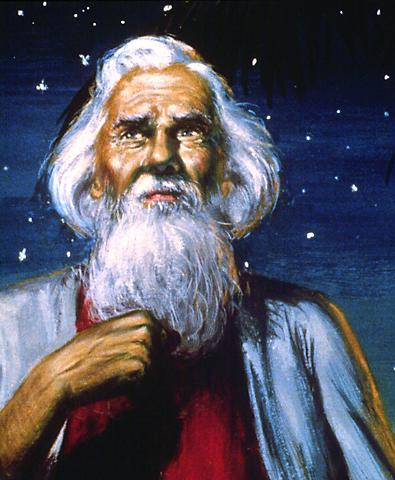 |
The star day of The Word is 19 Scorpio, which always starts on a Wednesday at noon.
The date proposed long ago in my work for the birth of Abraham was Wed 5 Oct 2052 BC pm. That afternoon began The Word holy star day, so that is a perfect match, that a great prophet was born on that day! He was not noted for great predictions of the future, but he wrote the words of God, some of which are contained in the Book of Abraham. It will turn out that many prophets were born on a star day in the Dragon which fits very well their particular spiritual gifts.
The star at the heart of the Dragon (see Figure 4) is designated as δ Dra (delta Draconis), having the Arabic name "Altais", which is a corruption of the words for "the Serpent". In my work, no English star name in this constellation includes the word "serpent" because there is another constellation called the Serpent, which is an actual snake, not a dragon.
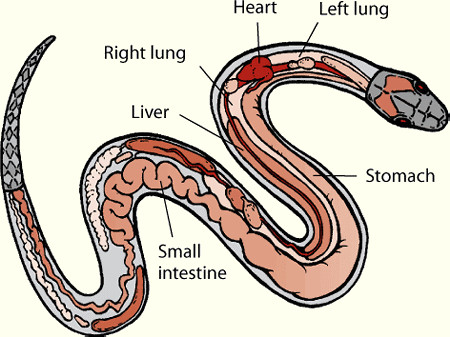 |
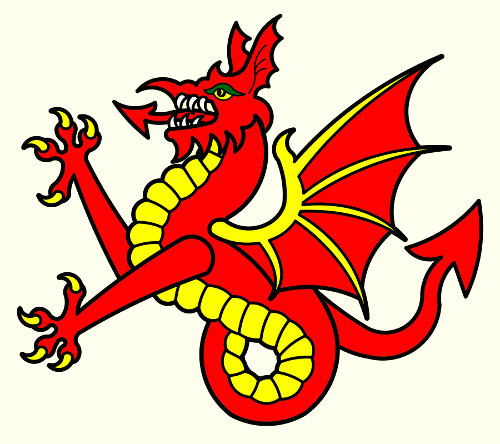 |
Given that background, the middle one of the seven stars is at the heart of the Dragon. It represents a unity of the gift of the revelator (eye) with that of the prophet (gut), and hence a seer. The heart is also the main control center of the mind and body, the center of all life. It is where the life stream passes to record our thoughts, words and actions in the Book of Life. Thus, we could expect a wide range of important sacred dates to be associated with the star at the heart of the Dragon!
The star day of the Unified Heart is 25 Pisces, which always starts on a Tuesday at noon.
We are not disappointed in the multitude of sacred dates which occurred on the day of the heart of the Dragon. Let's look at a few examples, keeping in mind that all of the dates were derived first from several other sacred calendars and not from trying to force them to fit the Star Calendar.
Rebekah was born not only on the star day of Vega, called "Splendor" in my work, being the third brightest star included in the Star Calendar (S), but she was also born on the day of the Unified Heart on the Uniform Star Calendar (US)!
Rachel died on Unified Heart (US), just after her son Benjamin was born on that same day.
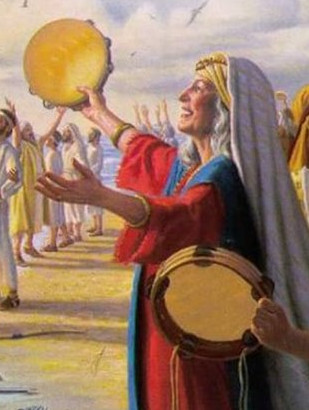 |
The Parting of the Red Sea took place on Unified Heart (US). That may be important in relating to how faith produces miracles. More and more research indicates that miracles can be performed by unifying the mind and gut with the heart, both visualizing and feeling that the desired result has already been obtained. When done in unity with the spirit which moves in all things, then the elements respond accordingly. Thus, this star may represent the gift of faith and so it is fitting for the day on which the Red Sea was parted by faith.[5]
The Book of Numbers was also revealed on Unified Heart (US). It was also the day when Jesus turned eight years old and became accountable to his Father.
In latter-day times, Unified Heart (S) was the day on which Oliver Cowdery began to be the scribe for Joseph the Seer on Tue 7 Apr 1829, and it was the day of the birth of the Church of Christ 364 days later on Tue 6 Apr 1830! It can here be noted that at first in my work, it was surprising that the LDS Church was not born on the Hebrew Passover, which was the day of the birth of Jesus Christ. Apparently the fact that both the birth of Christ and birth of the Church are celebrated on 6 April is enough for that connection, but on the sacred calendars, the birth of the Church was scheduled according to the Enoch Calendar (on the holy day Consecration), Sacred Round (13 Deer) and Mercury Calendar (0 Creation), as well as is now seen, on the Star Calendar!
The date of the laying of the cornerstone of the Nauvoo Temple on Tue 6 Apr 1841 was also on Unified Heart (S).
Thus, we see that this star date has been exceedingly important throughout sacred history!
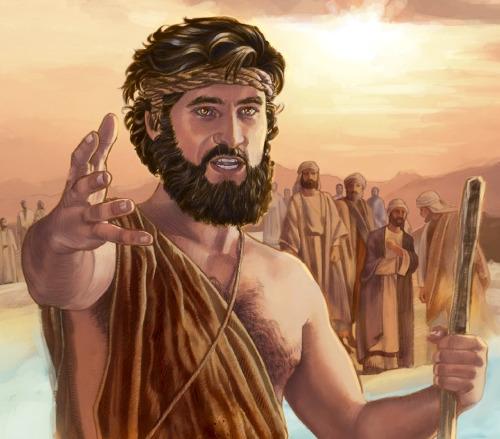 |
The star day of the Power Center is 12 Virgo, which always starts on a Wednesday at noon.
An example of the birth of a great prophet on 12 Virgo is that Abraham was born on Power Center (US). But wait, didn't we just see that Abraham was born on 19 Sco, The Word, on the Star Calendar? Yes indeed, Abraham was born on both of those sacred dragon days! He was born on The Word on the Star Calendar and on the Power Center on the Uniform Star Calendar, which runs independently, never inserting a leap week to keep synchronized with the precessing stars.
Another example is that Abraham's twin grandsons Esau and Jacob were also born on Power Center (US)! This illustrates several principles. First, as has been shown extensively in my articles, there are calendar links between parents and children (or descendants), meaning that they had vital dates coincide on the same sacred calendar, in this case the Uniform Star Calendar. Second, it illustrates how the uniform calendars cycle through the seasons because they never insert leap days. Abraham was born in the fall on Atonement (PH) and Jacob was born in the spring on Passover (PH), yet both were born on the same day on the Uniform Star Calendar.
As another example of both of these principles, Jacob's son Gad was also born on Power Center (US) and he was also born on the Festival of Lights (Hanukkah) in the middle of winter. Moreover, it must be added that Abraham, Jacob and Gad were all also born on 1 Temple on the Sacred Round, the one day in 260 on that calendar which represents birth!
Aaron, the brother of Moses and head of the Aaronic Priesthood before John the Baptist, was also born on Power Center (US). And speaking of John the Baptist, Power Center (US) was the star day of his birth also!
The star at the belly of the Dragon is designated as η Dra (eta Draconis) and has the name of Athebyne. In my work, it has been named "Gut Feeling" because it refers to the belly which a serpent or wyvern drags on the ground. The words "Gut Feeling" are well known in English to bring to mind that feeling of the inner tightening of the intestinal area that often signals danger or that a mistaken step is about to be taken. This is the part of the wyvern which feels the ground, like an extensive foot. The serpent is the symbol of a prophet, who feels the truth within the intestinal area. Note that the intestines even look like a serpent!
 |
The foot was referred to by Paul when he said that the body of Christ (the Church) requires both a head (with the eye and generally considered most important) and also a foot (feels the ground underneath). He made the point that both are important and that neither should say it hath no need of the other (1 Cor 12:21).
The star day of Gut Feeling is 25 Virgo, which always starts on a Tuesday at noon.
The great prophet Moses was born on Gut Feeling (US). One name that was considered for this star was "Leader" because it tends to be a person who leads a people or delivers them out of bondage. Again, it refers to someone like Nephi who goes by his feelings. Nephi went step by step to get the plates, feeling his way along, not knowing ahead what he should do (1 Nephi 4:6).
On the other hand, the eye, the Visionary, the revelator may know the end from the beginning, that is, how it will turn out, but may have no idea what is the next step to take! The revelator is often a comforter[6] because he sees how things will turn out. He can encourage people in hard times that in the end they will succeed and his words won't be just a meaningless platitude.
An example might be two players on a football team. The quarterback should be a serpent who knows what the next play should be, but may have no idea how the game will end. Another player might be the one in the huddle to assure the others that somehow a miracle will happen and they will win! It would be good for the cheerleaders to be revelators!
Another example is the man in the crow's nest on the mast of a boat and the helmsman at the rudder. The revelator crow with distant vision can set the strategic long term course to arrive at the desired destination, but the serpent helmsman who is in touch with the sea can decide that the course direction may be accurate, but first he must steer around a large protruding boulder which the crow did not see!
 |
Another thought here is that knowing these differences could exlain Miriam's chastisement by the Lord. She was a seeress and perhaps could see some things that Moses could not. He was an archetypal prophet, one of the greatest in history, and indeed, had been one of the seven chief angels before his mortal life.[7] Miriam chided him for having married an Ethiopian woman (Num. 12:1). Moses may not have even known the reason for having done that, but had most likely "felt" it was the right step to take. The Lord interrupted Miriam's words to demand how she could dare to compare her gift to his, because Moses talked to God face to face, unlike merely having visions or dreams as she does. She paid the penalty of having leprosy for a week as punishment for her insolence! Thus, not everyone has the same gift.
Venturing into the area of speculation, which is mostly avoided in my articles, one more similarity might be suggested. In the latter days, Joseph the Seer prophesied that a man like unto Moses would yet be raised up to lead the latter-day saints out of the bondage which they would be in at that future time. He would physically lead them to a new location to be free, as did Moses. Moreover, whereas the angel of God accompanied Moses, in the latter-day case, both angels and Jesus Christ himself will accompany them (D&C 103:16-20).
What does it mean to be "like unto Moses"? Of course, one meaning would be that he will perform the similar task of leading out of bondage, but perhaps it could also mean that he might be a serpent type who has the gift of "Gut Feeling" and hence might be born on that star day as was Moses.
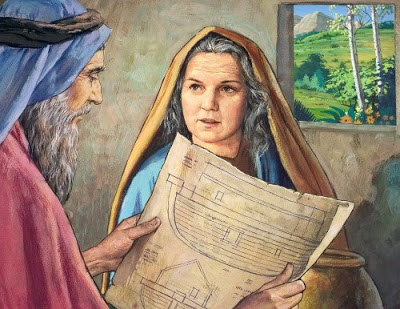 |
Usually α (alpha, the first letter of the Greek alphabet) is reserved for the brightest star in a constellation, but in this case Thuban is honored with that designation because it used to be the pole star a few thousand years ago, when the Egyptians pyramids were being built. Figure 3 shows the circle that the north celestial pole (where the axis of the spinning earth points) draws in the sky every 26,000 years. Note that Thuban is almost exactly on that circle, so it was a "North Star". Note also that Polaris, our current North Star at the end of the tail of the Little Bear, is also nearly on the circle at about the 6 o'clock position. The north ecliptic pole is the stable point at the center of the circle.
The star day of Thuban is 22 Leo, which always starts on a Saturday at noon.
One sacred event which occurred on the day Dragon on the Star Calendar was the birth of Naamah, the wife of Noah and daughter of Enoch (Jasher 5:15). Besides having been born on ten other holy days as discussed in earlier articles, she was also born on the Dragon star day (Thuban) on the Star Calendar!
On the Uniform Star Calendar she was born on 1 Aqr, which is another major holy day, being the first day of winter, for a total of twelve holy days coinciding at her birth! That matches the day 1 Winter on the Uniform Enoch Calendar, on which she was also born. Those two days always coincide because both of those uniform calendars always have 364 days. Those calendar also have the days 1 Summer (UE) coincide with 1 Leo (US), which days are both the first day of Summer. It turns out that her marriage to Noah was on those summer solstices days!
Thus, there have been important sacred events on all seven of the Dragon star major holy days.
Seven stars have been identified in the constellation of the Dragon as being major holy days on the Star Calendar, due in part to their locations at key points in his body. The appearance of Dragon stars in the Star Calendar means that in that context the Dragon is an emblem of good, not evil, and in fact the Dragon represents God upon his throne in the center of heaven!
Each of the seven stars is discussed in detail and their relationship to certain gifts of the spirit, such as the gifts of faith, prophecy and revelation. Then examples are given of key sacred events which occurred on each of these Dragon days, including the births and deaths of several prophets.
No attempt has been made to calculate the odds of so many formerly published sacred dates also falling on sacred star days of the Dragon, but hopefully the reader will recognize that they are far beyond chance alignments! Like other sacred calendars, the Star and Uniform Star Calendars have been used to schedule sacred events by the Creator!